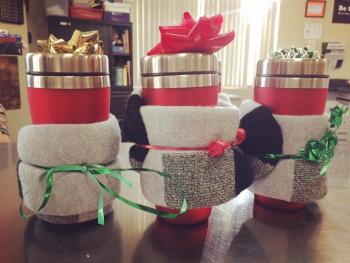Image Caption
By Shari Narine
Windspeaker Contributor
EDMONTON
January 5, 2017—The next 10 days promise bitterly-cold temperatures in Edmonton and the north, and that brings with it extra concerns for those “sleeping rough.” Robin Padanyi, spokesperson for Hope Mission, has seen it first-hand.
“There was a gentleman who was picked up … he was shaking. He had just a sweatshirt on. He was almost at the point of medical emergency. We were able to get him back to our shelter and get him warm.
“There’s countless other stories like that and if we don’t connect with those people, it could be life or death,” said Padanyi.
Personnel at Hope Mission, which includes family physicians and a nurse practitioner during the day and into the early evening, were able to handle the situation.
And Hope Mission has developed a good working relationship with Emergency Medical Services, both notifying each other when their services are needed. Hope Mission operates a 24/7 rescue van that EMS will contact if they see someone who is not in medical distress, but needs a place to sleep or something to eat.
In November, Hope Mission opened the first daytime beds in Edmonton. This past Tuesday, those 150 beds accommodated 298 people in-and-out over 24 hours.
When the temperature dropped to minus 22 on Jan. 3, 525 people slept at Hope Mission, which is the largest overnight shelter in Edmonton. The inner city organization can sleep slightly more than 600 people.
While Padanyi has seen what the extreme cold temperatures can do to people, he has also seen how the bad weather has brought out the best in people.
“ETS bus drivers tend to be a lot more accommodating even to the guests who are homeless, to the people who are on the streets,” said Padanyi.
“I was on the bus one day and I saw a man waiting for the bus. Looked like he might be living in kind of a rough situation and just came and said, ‘Hey, I don’t have any fare but I just need to get some place warm,’ and the bus driver was accommodating and said, ‘Yeah, come on in. I’ll drop you off at the bus station and you should be able to transfer to wherever you want there.’”
The ETS has a cold weather protocol, which allows riders to flag down a bus for both pick up and drop off instead of having to rely on bus stops.
On Jan. 2, the City of Edmonton made the decision to keep the Churchill LRT underground concourses open overnight to provide shelter for the homeless.
“Having that space available, I think it just adds to the capacity of the city that if you’re homeless you’re not out in the cold. You have some place to go. We see that as a benefit for sure,” said Padanyi.
“The reality is for some people, whether it’s mobility concerns or whether they’re in a different part of the city and can’t quite make it to our shelters, some area out of the cold and out of the elements can provide a reprieve.”
Padanyi said people with mental health issues, who have anxieties about being in crowded spaces, will choose not to go to shelters. With frostbite and hypothermia occurring in very little time with a high wind chills, having another option available is valuable.
But it’s not only the city that has stepped up to the challenge with its caring policies, he says, it’s the residents as well.
Hope Mission, along with other city agencies that help the impoverished, has received overwhelming support from the public, whether through sponsorship for festive meals or donations of warm clothing.
“The cold weather came pretty suddenly and so a lot of our guests were definitely without as far as appropriate winter clothing,” said Padanyi. “The response (for warm clothing) was tremendous before Christmas. We’ve seen a bit of slow down since then … but the cold is continuing on. It’s just January. In Edmonton, winter is at least a few more months if not longer.”
Clients at Hope Mission could use more men’s new long underwear and new warm socks, as well as winter coats, mitts and boots. Donations can be dropped off at the main building at 9908 106 Avenue anytime during the day or early evening.

